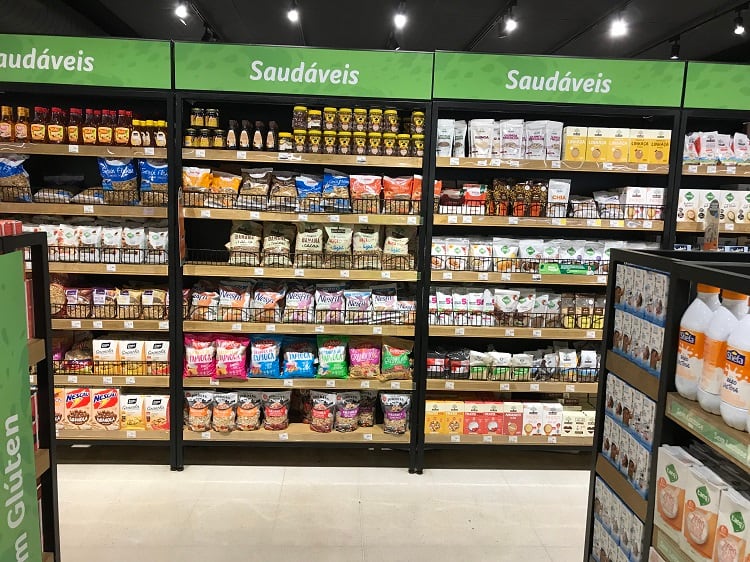In 2018, the unemployment rate in Latin America and the Caribbean was 7.8% - “well above” the global rate of 5.2%, according to retail analysis from IGD. Economic recovery in the region had also been “more subdued than anticipated”, the institute said.
From a retail perspective, IGD said this meant atacarejo (cash and carry) formats and discounters were thriving as price conscious shoppers moved to economy brands and private label, although the latter remained largely under-developed.
But what did this mean for the functional food and beverage space?
Could be 'considered a luxury'
Oliver Butterworth, international retail analyst at IGD, said the current economic climate in Latin America was “likely to cause challenges to the retail of functional foods in terms of mass-appeal”.
“In markets such as Brazil, where there is a notable wealth divide, less affluent shoppers are more concerned with buying basic food staples such as rice and beans,” Butterworth told NutraIngredients-LATAM. “Functional foods could therefore be considered a luxury that appeals to more affluent shoppers, who should be treated as a key target group for retailers in this space.”
The “growing trend” of retail premiumization, he said, also pushed functional food and beverages towards affluent shoppers, rather than encourage mass interest – a trend happening worldwide.
“Major retailers such as GPD (Casino) in Brazil are remodeling stores and introducing more of a health food focus, which is reflected in their layout and an increase in the amount of floor space allocated to health-food lines (…) Stores which stock a higher proportion of health and functional foods can generally be perceived as more expensive by shoppers, which can affect their choice between stores.”
However, Butterworth said premium store areas were “the obvious space” for functional food and beverage products, certainly to test the ground given affluent shoppers were typically more susceptible to trying new products.
“Premium retail formats are a key space for food and beverage products to excel. Customers who shop in premium stores have more disposable income and therefore have the luxury of being able to explore products which sit outside essential food groups.”
Cash and carry boom

But, Butterworth said once a product was established enough, it could transition into less premium formats like cash and carry – one of the fastest-growing retail channels in Latin America.
According to IGD, Brazil and Argentina were two key markets for cash and carry where store numbers would continue to expand in the medium-term. Carrefour Brasil, for example, opened 20 of its cash and carry Atacadão stores last year and would open a further ten in the first half of this year. Many retailers in these two markets had also converted hypermarkets into cash and carry channels – Casino in Brazil with its Assaí stores and Carrefour in Argentina with its Maxi C&C format.
Butterworth said atacarejo or cash and carry held both consumer and business appeal.
“This format enables walk-in customers to buy branded items at prices which are closer to the wholesale cost, which is hugely desirable. Brands also avoid cannibalization of sales across other channels by restricting their offer to core lines and irregular pack sizes in cash and carry,” he said.
However, it remained a“highly competitive trading space”, he said, and entering it meant going head to head with major brands. This was, therefore, where consumer engagement was vital, he said.
“Communication to shoppers should explain why they should buy these products and how it will help them achieve a healthier lifestyle, depending on what their health priorities are, and be clear on what the products are providing them that they cannot get from somewhere else,” Butterworth said.
While fixtures, packaging, in-store education and tastings would support this, he said “the personal touch and engagement in store” would also help brands stand out. This was particularly important in Brazil where customers really valued personal service and one-to-one interaction with store colleagues and brand ambassadors, he said.
Private label promise?
While brands remained “highly desirably” in Latin America, versus private label, Butterworth said there could be scope to develop the latter. Private label sales represented a very small proportion of the total market and quality had historically been very poor, he said, but this was “vastly improving”.
“The growth of private label in Latin America is still in its infancy when compared to more developed regions like Europe. Private label manufacturers could take learnings from discounters in Europe, such as Aldi and Lidl, and develop more affordable functional food lines.
“...Among less affluent shoppers, there is still the desire to eat more healthily. If manufacturers are able to produce good quality private label functional foods, then these have the potential to become popular, particularly in markets such as Colombia which have a stronger discounter presence,” Butterworth said.
To read the report, please click HERE.

